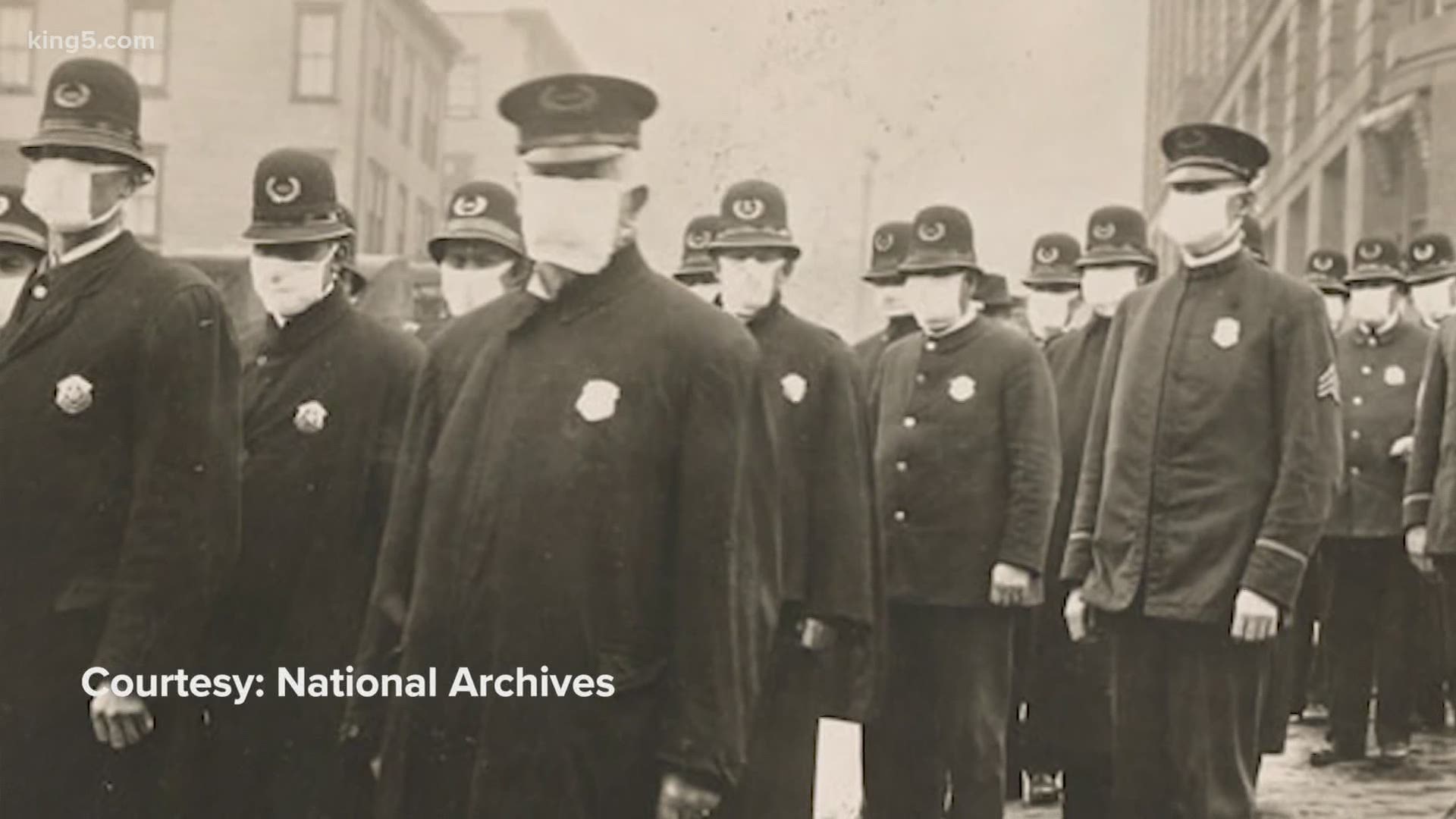SEATTLE — Restless Americans hoping to get back to normal. Families foregoing the face masks. Businesses opening up again.
While it sounds exactly like what's playing out with the novel coronavirus (COVID-19) pandemic in 2020, it was also the same in 1918 as the world emerged from the devastating Spanish Flu pandemic that killed as many as 50 million people worldwide.
Just like in 1918, a second wave of the novel coronavirus appears imminent as local governments begin loosening restrictions.
Historians agree that Armistice Day in November of 1918 was a key moment when the Spanish Flu re-emerged and a new spike in cases developed.
"Seattleites could stay home no longer. They poured into the streets, they gathered in large crowds downtown, and the door opened for a second wave," explained Leonard Garfield, historian and executive director of the Museum of History and Industry in Seattle. "One newspaper reporter said there was ‘not a mask in sight.'"
In the first four months of the COVID-19 pandemic, just under 1,000 deaths have been reported in Washington state. In the first four months of the Spanish Flu outbreak, September through December, around 4,500 Washington residents lost their lives.
That's also about the same time that a second wave of the flu began to emerge as Americans let their guards down.
That second wave spiked in the winter of 1919 and resulted in the death of another 2,000 Washington residents, according to a KING 5 analysis of CDC archives. That's around a 50% drop in cases during the second wave.
To slow the spread of the virus the second time around, health officials took more drastic measures and began an early version of contact tracing.
"They quickly took action," said Garfield. "They realized they could not force everyone inside, and they could not close businesses down again. So, what they did was focus intently on who was symptomatic and forced them into quarantine."
In total, the Spanish Flu killed 6,500 Washingtonians. Historians believe it took a total of around two years for the virus to completely subside.

